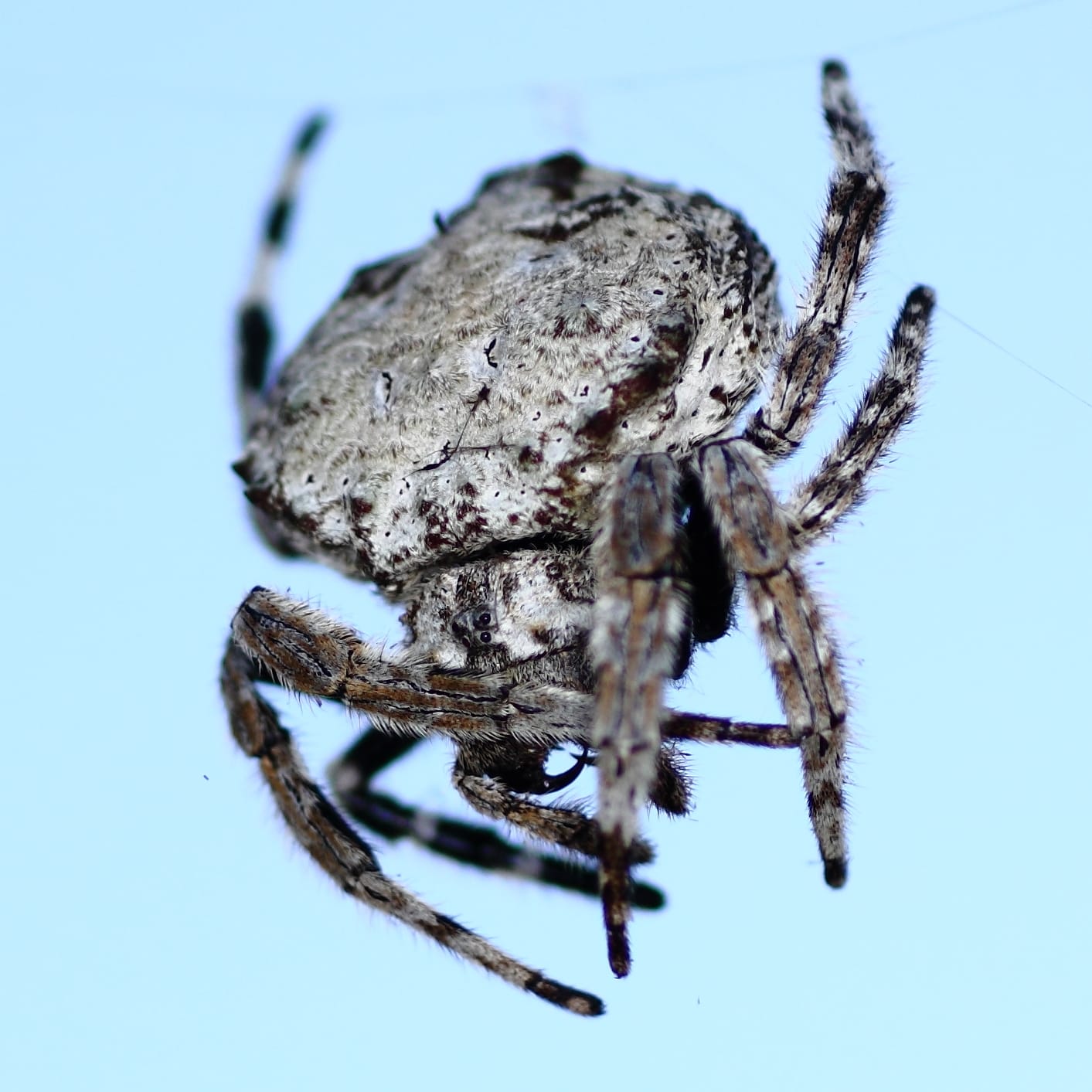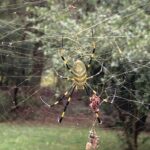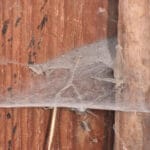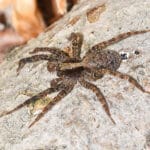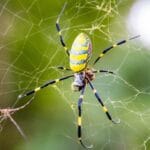Get ready to dive into the thrilling world of Darwin’s bark spiders, also known as “mega-weavers” for their webs that can be larger than 30 square feet! These mind-blowing creatures have captured the imaginations of biologists and nature enthusiasts alike. Let’s uncover the mysteries of these amazing weavers, from their incredibly strong silk to their intriguing hunting strategies. We’ll explore how they thrive in the wild and why their webs have become the stuff of legend. Join us as we venture into the fascinating world of Darwin’s bark spiders!
A Spider That Spins Across Rivers
Darwin’s bark spider (Caerostris darwini) is the ultimate weaver of the natural world. This amazing creature, discovered in Madagascar in 2010, spins webs so large they can stretch across entire rivers!
What makes these webs even more extraordinary is their strength. They’re crafted from the toughest natural material we know of—stronger than steel and even surpassing Kevlar, which is used to make bulletproof vests! This super-strong silk allows the spider to capture large, winged insects that fly over the water, such as dragonflies and mayflies.
Female Darwin’s bark spiders are the giants of the species. They have distinctive bumps on their backs and can grow to be almost an inch long. The males, on the other hand, are significantly smaller. This striking difference in size between the sexes is known as “sexual dimorphism.”
Building a web across a river is no easy task! Scientists are still working to fully unravel how Darwin’s bark spiders achieve this feat. It’s a complex process that likely involves spinning extra-strong silk lines that act as bridges across the water. Once this bridge is in place, the spider can start constructing the rest of its web.
Venom and Webs: Are They Dangerous?
Like most spiders, Darwin’s bark spiders are venomous, meaning they use venom to subdue their prey—mainly insects and other small creatures. However, their venom isn’t something humans need to worry about. It’s primarily designed to paralyze their next meal and doesn’t pose a serious threat to humans.
While they can bite if threatened, it’s likely to feel more like a bee sting than anything truly harmful. Research suggests that their bites cause only minor, short-lived discomfort. Plus, despite their impressive size and those incredible webs strung across rivers, Darwin’s bark spiders would much rather retreat than bite when encountering humans.
Why Darwin’s Bark Spider Silk Is So Remarkable
Imagine a spider spinning a web so strong it could trap a bird! That’s what makes the Darwin’s bark spider so extraordinary. This incredible creature produces the toughest biological material ever found.
The secret lies in the way Darwin’s bark spiders combine special proteins while spinning their webs. This unique process creates an exceptionally durable material that’s significantly tougher than Kevlar.
But it’s not just the strength of the silk that’s amazing—these spiders are master architects! They build colossal webs that can stretch a mind-blowing 25 meters (about 82 feet) across rivers and streams. These massive webs allow the Darwin’s bark spider to catch a variety of prey, including insects that live in or near the water.
The incredible strength and toughness of Darwin’s bark spider silk have scientists and engineers buzzing with excitement. We could potentially use this super-strong material to create everything from lighter and stronger buildings to ultra-durable clothing. Darwin’s bark spider is a perfect example of how nature can inspire groundbreaking innovations!
Unraveling the Secrets of Super-Strength
What makes this little creature’s silk so special? It all comes down to the incredible strength and flexibility of its silk. This spider silk is about 10 times stronger than Kevlar, and it can stretch out to almost double its length without snapping! This exceptional combination is what makes Darwin’s bark spider silk perfect for crafting those massive webs.
Darwin’s bark spiders’ webs aren’t your average garden variety. These webs are strong enough to bridge the gap over flowing water, and have even been known to trap small birds! What’s even more fascinating is that these webs aren’t made from just one type of silk. The spider actually uses a variety of different silks, each uniquely designed for a specific function.
Think of it like this: the strongest silk acts like the web’s steel beams and support cables, holding everything together. This silk is used for the main lines that give the web its shape and structure. Then, there’s the stretchier silk, the kind that’s used to make those sticky spiral threads that catch insects—and sometimes even birds!
Darwin’s bark spider silk has scientists and engineers incredibly interested. It’s as if nature has provided us with a material that’s stronger and more versatile than anything we’ve ever seen! Some scientists are already researching ways we could use this silk in the future for applications such as bulletproof clothing, medical garments, surgical sutures, and even new types of building materials—the possibilities seem endless!
Understanding Darwin’s Bark Spider: An In-Depth Look
Classification:
- Family: Araneidae (orb-weavers)
- Genus: Caerostris
- Species: Caerostris darwini
Habitat:
Found near rivers and streams in Madagascar, specifically in the Andasibe-Mantadia National Park, where they were first discovered.
Physical Characteristics:
- Sexual Dimorphism: Extreme difference in size between sexes.
- Females: 18-22 mm (0.7-0.9 in) body length. Black with white hairs on the cephalothorax, abdomen, and legs. Possess two sets of “humps” on the cephalothorax. First leg approximately 35 mm (1.4 in) long.
- Males: 6 mm (0.2 in) body length—about one-third the size of females.
- Weight: Females can be 14 times heavier than males.
Webs:
- Size: Largest orb webs known, ranging from 900 to 28,000 square centimeters (140 to 4,340 square inches).
- Bridge Lines: Supporting threads can stretch up to 25 meters (82 feet)—long enough to cross rivers.
- Silk Strength: Toughest biological material recorded. Some studies have measured it at 10 times stronger than Kevlar.
- Average Toughness: 350 MJ/m3.
- Maximum Recorded Toughness: 520 MJ/m3.
- Prey Capture: Webs are strategically positioned over water to catch aquatic insects like mayflies.
Conservation Status:
Currently, Darwin’s bark spiders are not considered endangered. However, it’s crucial to protect their habitat in Madagascar to ensure their continued survival. Deforestation and habitat loss are potential threats.
Ongoing Research and Future Implications:
Scientists are still diligently working to unlock all the secrets of Darwin’s bark spider silk. This is a field of research that is bursting with potential. Who knows what incredible discoveries await us down the line? One thing is for sure: this little spider has given us an incredible glimpse into the power of nature’s own engineering.
Was it just me, or did Darwin’s bark spider look like a deformed monkey? if that’s true, will there also be a deformed sloth?
